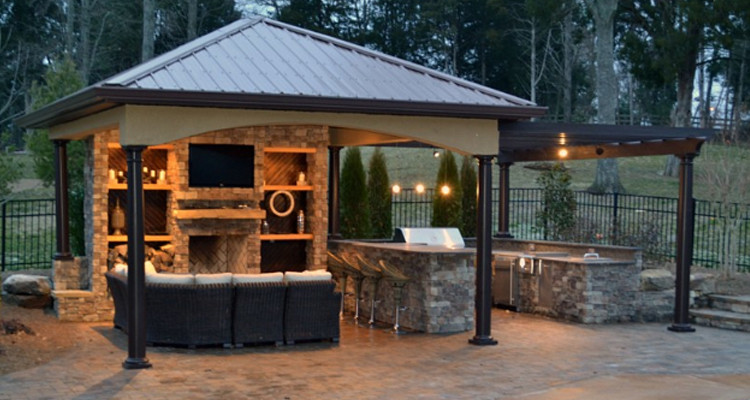Outdoor Structures: The Foundation to a Landscape
Posted by Doug Gardner on 31st Dec 2014
 Demand for outdoor living spaces is still strong, and
outdoor masterpieces can be the difference maker in a tough housing market. It
is often the little things that make the biggest differences. Adding a little pizazz
to compliment your house and make it a more welcoming environment can be the
difference in making your house exceptionally desirable.
Demand for outdoor living spaces is still strong, and
outdoor masterpieces can be the difference maker in a tough housing market. It
is often the little things that make the biggest differences. Adding a little pizazz
to compliment your house and make it a more welcoming environment can be the
difference in making your house exceptionally desirable.
Outdoor living spaces have really taken off in the past few years. Patios, decks, and pools just aren’t enough for some these days. People are installing entire kitchen areas, dining, sitting, and living areas complete with HD TV and surround sound. And as these setups become more prevalent, structures such as gazebos, arbors, trellises, and pergolas are become more popular than ever before. "People aren't looking for a simple outdoor space anymore. They're thinking in terms of defining spaces with walls, ceilings and roofs, but only in an open sense to blend with the outdoors," says Ernie Sears, president and owner of Backyard America of Manassas, Va. "Pergolas have really taken off over the last few years. They've gone from practically zero percent of our business to the single largest segment."
Lots of outdoor structures are combinations or hybrid variations of decks and patios with gazebos, pergolas, arbors, trellis, that all share the same purposes: to provide and aesthetically pleasing area to hang lighting fixtures and decorations, fans, provide shade or wind protection, and add a little privacy. "These structures are all about expanding use," says Ernie. "People want to get more useful hours per day and more useful days per year from the outdoor living spaces."
A few pointers to follow if you’re adding to a previously standing structure: be sure to use the same materials as were used on the original structure; follow building codes and regulations, especially regarding electrical and gas lines; choose quality materials and build carefully so that your structure stands tall against the elements and time. If snow loading is a concern, a pergola-type structure minimizes the amount of surface area for snow to collect on. If wind is a concern, make sure your structure is properly secured to grounded foundations.
Some people make the mistake of thinking these are only warm climate structures, but that is not the case. There are plenty of winter-friendly outdoor environments that could benefit from a well-built patio or deck area with an arbor covering. "We sell a ton of product to New Jersey and even the Dakotas are really hot in terms of sales," Ernie says. "We sell a lot more to colder climates than even I would have thought a few years ago."
Remember, these types of structures are usually followed by pricey additions that you weren’t initially planning on. Add-ons that embellish you new structure tend to create a snowball effect to the rest of the yard. "Outdoor structures usually lead to even more add-on sales such as fencing or privacy screens," says Ernie. "You can easily gain an extra 10 to 20 percent on top of your original price for the project." So be smart, set yourself a budget, and really plan out and research the different designs to make sure no stone goes unturned, and you truly construct the environment of your dreams.
